- The benefits of growing winter garlic
- Selecting the right garlic variety for winter planting
- 1. Hardneck vs Softneck Garlic
- 2. Adaptability to Winter Conditions
- 3. Growing Zone Suitability
- 4. Flavor and Culinary Uses
- 5. Storage and Shelf Life
- 6. Disease Resistance
- Preparing the soil for winter garlic
- Soil type and pH level
- Soil preparation
- Fertilization
- Soil moisture
- Planting winter garlic in the fall
- 1. Selecting the right garlic bulbs
- 2. Preparing the soil
- 3. Planting the garlic cloves
- 4. Mulching and protecting
- 5. Watering and maintenance
- 6. Harvesting the garlic
- Mulching and protecting winter garlic
- 1. Organic Mulch
- 2. Plastic Mulch
- 3. Row Covers
- 4. Protective Structures
- 5. Pest Protection
- 6. Regular Monitoring
- Providing adequate water and nutrients for winter garlic
- 1. Watering
- 2. Nutrient Management
- 3. Mulching
- Controlling pests and diseases in winter garlic
- Pests:
- Diseases:
- Harvesting winter garlic at the right time
- 1. Look for yellowing leaves
- 2. Check for papery skins
- 3. Perform the thumb test
- 4. Consider the weather
- 5. Time it right
- Storing and using winter garlic
- Storing winter garlic
- Using winter garlic
- “Question-Answer”
- What are the secrets to raising big winter garlic?
- Which variety of garlic is best for winter planting?
- When is the best time to plant winter garlic?
- What soil preparation is necessary for growing big winter garlic?
- How often should winter garlic be watered?
- Are there any pests or diseases that can affect winter garlic?
- “Video” PLANTING GARLIC plus TIPS for growing garlic in HOT CLIMATES
Garlic is not only a versatile and flavorful ingredient in many dishes, but it also has a host of health benefits. Growing garlic in your own garden can be a rewarding experience, and winter garlic is known for its large bulb size and robust flavor. However, there are a few secrets to successfully raising big winter garlic.
Choosing the right variety: There are many different varieties of garlic, but not all are suitable for winter planting. Look for varieties that are specifically bred for cold weather, such as Siberian or Georgian Crystal. These varieties have a higher tolerance to freezing temperatures and will produce larger bulbs.
Preparing the soil: Garlic prefers well-drained soil that is rich in organic matter. Before planting, thoroughly amend the soil with compost or aged manure to improve its fertility and drainage. Avoid planting garlic in areas that tend to become waterlogged, as this can cause the bulbs to rot.
Planting at the right time: Planting winter garlic at the right time is crucial for its successful growth. In most regions, this is typically in the fall, around 2-4 weeks before the first frost. This allows the garlic to establish its root system before winter sets in, ensuring a strong and healthy plant in the spring.
“Planting depth and spacing: Plant the garlic cloves with the pointed side up, about 2 inches deep and 4-6 inches apart. Make sure to place them in rows that are spaced at least a foot apart to allow for good airflow and prevent diseases.”
Providing proper care throughout the winter months is also important. Regularly check the soil moisture and water if necessary, but be careful not to overwater, as this can lead to rotting. Mulching with straw or leaves can help insulate the soil and protect the garlic from extreme temperature fluctuations.
By following these secrets, you can maximize your chances of growing big winter garlic that will make your dishes even more delicious.
The benefits of growing winter garlic
Growing winter garlic has several benefits compared to other types of garlic. Here are some of the advantages:
- Increased yield: Winter garlic tends to produce larger bulbs compared to spring garlic. This means that you can harvest more garlic with each plant, providing you with a higher yield.
- Better taste: Winter garlic has a more complex and richer flavor compared to other varieties. The cold temperatures during its growth period enhance the flavor and make it more enjoyable for culinary purposes.
- Longer storage life: Due to its thicker skin and higher sugar content, winter garlic has a longer shelf life compared to spring garlic. You can store winter garlic for several months if stored properly.
- Enhanced nutritional value: Winter garlic tends to have a higher concentration of beneficial compounds such as allicin, which is known for its antimicrobial and antioxidant properties. Consuming winter garlic can provide numerous health benefits.
- Less pest and disease pressure: Planting winter garlic allows you to avoid some common pests and diseases that affect spring garlic. The cold temperatures during winter suppress the population of certain harmful insects and pathogens.
- Improved soil structure: Winter garlic has an extensive root system that helps improve soil structure. The roots break up compacted soil and create channels for water and air, enhancing the overall health of the soil.
In conclusion, growing winter garlic offers various benefits, including increased yield, better taste, longer storage life, enhanced nutritional value, reduced pest and disease pressure, and improved soil structure. Consider planting winter garlic to enjoy these advantages and add flavorful garlic to your recipes.
Selecting the right garlic variety for winter planting
Choosing the right variety of garlic is crucial when it comes to winter planting, as it determines the size, flavor, and overall success of your garlic crop. Here are some factors to consider when selecting the right garlic variety for winter planting:
1. Hardneck vs Softneck Garlic
There are two main types of garlic: hardneck garlic and softneck garlic. Hardneck varieties are known for their larger cloves and stronger flavors, while softneck varieties have smaller cloves and a milder taste. Hardneck garlic is more suitable for cold climates and winter planting due to its better cold hardiness.
2. Adaptability to Winter Conditions
When choosing a garlic variety for winter planting, it is important to consider its adaptability to cold temperatures and winter conditions. Look for varieties that are known for their ability to withstand frost and freezing temperatures. These varieties are more likely to survive the harsh winter and produce good-sized bulbs.
3. Growing Zone Suitability
Take into account the specific growing zone you are located in when selecting a garlic variety for winter planting. Different garlic varieties have different heat and cold requirements, so choose a variety that is suitable for your specific growing zone. This will ensure that the garlic bulbs have enough time to develop and mature before the winter frost sets in.
4. Flavor and Culinary Uses
Consider the flavor and culinary uses of the garlic variety you are selecting. Some varieties have a stronger, spicier flavor, while others have a milder and sweeter taste. Think about how you plan to use the garlic in your cooking and choose a variety that will best suit your culinary preferences.
5. Storage and Shelf Life
Another important factor to consider is the storage and shelf life of the garlic variety. Some varieties have a longer shelf life and can be stored for a longer period of time without losing their flavor or quality. If you are planning to store garlic for an extended period, choose a variety that is known for its good storage capabilities.
6. Disease Resistance
Lastly, consider the disease resistance of the garlic variety. Some varieties are more resistant to common garlic diseases, such as white rot or fusarium, than others. Choosing a disease-resistant variety can help prevent future problems and ensure a healthier garlic crop.
In conclusion, selecting the right garlic variety for winter planting involves considering factors such as hardneck vs softneck garlic, adaptability to winter conditions, growing zone suitability, flavor and culinary uses, storage and shelf life, and disease resistance. By taking these factors into account, you can choose a garlic variety that is well-suited for winter planting and optimize your chances of a successful garlic harvest.
Preparing the soil for winter garlic
One of the most important steps in growing big winter garlic is preparing the soil. The quality of the soil directly affects the growth and development of the garlic plants, so it’s crucial to provide them with the best possible conditions.
Soil type and pH level
Garlic prefers loose, well-draining soil that is rich in organic matter. Aim for a sandy loam soil with a pH level of around 6.5 to 7.5. This pH range will ensure optimal nutrient availability for the garlic plants.
Soil preparation
Before planting the garlic cloves, it’s important to prepare the soil properly. Start by removing any weeds or plant residues from the area. Break up large clumps of soil and remove any rocks or debris that may hinder the growth of the garlic plants.
Next, incorporate organic matter into the soil. This can be done by adding well-rotted compost or aged manure. Organic matter improves soil structure, enhances nutrient retention, and promotes beneficial soil microorganisms.
Once the organic matter is added, mix it thoroughly with the soil using a garden fork or a tiller. This will ensure an even distribution of nutrients and organic matter throughout the soil.
Fertilization
Garlic plants require a sufficient supply of nutrients for healthy growth. Before planting, it’s a good idea to perform a soil test to determine the nutrient levels. Based on the results, you can add any necessary amendments to the soil.
Common fertilizers for garlic include a balanced fertilizer with a ratio of 10-10-10 or 14-14-14. Apply the fertilizer according to the recommended rates and mix it into the soil before planting.
Soil moisture
Proper soil moisture is crucial for garlic growth. The soil should be evenly moist, but not waterlogged. Before planting, ensure that the soil is properly watered. Throughout the growing season, monitor the moisture levels and water the plants as needed.
Avoid overwatering, as excessive moisture can lead to root rot and other diseases. Mulching can help maintain soil moisture and regulate temperature fluctuations.
By preparing the soil properly, you can provide your winter garlic with the ideal conditions for healthy growth and development. Follow these steps to ensure a successful garlic harvest next summer.
Planting winter garlic in the fall
Planting winter garlic in the fall is a crucial step in ensuring a successful harvest. It is important to choose the right time and follow the proper techniques to give your garlic bulbs the best chance to grow and develop. Here are some key steps to follow when planting winter garlic in the fall:
1. Selecting the right garlic bulbs
Choose garlic bulbs that are specifically meant for winter planting. These bulbs are typically larger and have more protective layers, which allow them to withstand the colder temperatures of winter. Look for varieties such as Rocambole, Porcelain, or Purple Stripe, as they tend to be better suited for winter planting.
2. Preparing the soil
Prepare the soil well in advance of planting the winter garlic. Garlic thrives in well-draining soil that is rich in organic matter. Clear the area of any existing plants or debris, and loosen the soil to a depth of at least 8 inches. Add compost or well-rotted manure to improve the soil’s fertility.
3. Planting the garlic cloves
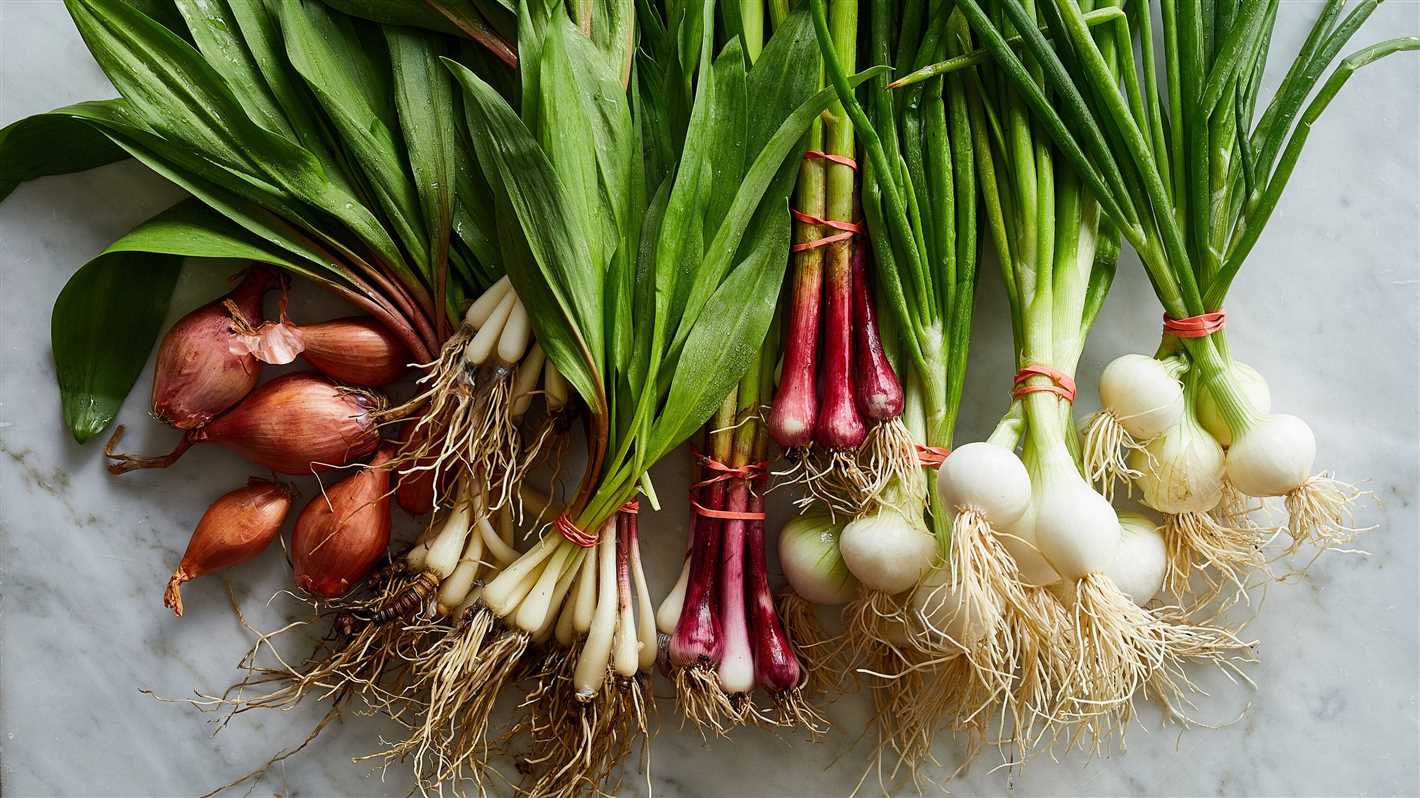
Break apart the garlic bulbs into individual cloves, taking care not to damage them. Plant the cloves with the pointed end facing up, about 2-3 inches deep and 6 inches apart. Space rows about 12-18 inches apart to allow for proper growth and ventilation.
4. Mulching and protecting
After planting the garlic cloves, apply a layer of mulch to protect them from the harsh winter conditions. Straw or compost can be used as mulch. This layer will help to insulate the soil and prevent frost heaving. Additionally, consider protecting the planted area with row covers or cloches to further shield the garlic from extreme weather.
5. Watering and maintenance
Water the planted garlic cloves well after planting, and continue to water regularly until the ground freezes. This will help the cloves establish their root system before the winter sets in. Additionally, weed the area regularly and remove any competition for nutrients and space.
6. Harvesting the garlic
Winter garlic is typically ready for harvest in late spring or early summer, depending on the variety and weather conditions. Once the leaves start to turn yellow and dry out, it’s time to harvest. Carefully dig up the bulbs, taking care not to bruise or damage them. Allow the harvested garlic to cure in a cool, dry, and well-ventilated area for a few weeks before storing or using.
| Steps | Description |
|---|---|
| Selecting the right garlic bulbs | Choose winter garlic varieties that are adapted to winter planting |
| Preparing the soil | Clear the area, loosen the soil, and add organic matter for improved fertility |
| Planting the garlic cloves | Plant individual cloves with their pointed end facing up, at appropriate spacing |
| Mulching and protecting | Apply mulch and provide additional protection from harsh winter conditions |
| Watering and maintenance | Water regularly before winter, and remove weeds to ensure proper growth |
| Harvesting the garlic | Dig up the bulbs when leaves start to dry out, and cure them before storage or use |
By following these steps, you can increase the chances of successfully growing big winter garlic. Remember to adjust the planting dates and techniques based on your specific climate and growing conditions.
Mulching and protecting winter garlic
Mulching is an important practice in growing winter garlic as it helps protect the bulbs from extreme temperature fluctuations and moisture loss. Here are some methods for mulching and protecting your winter garlic:
1. Organic Mulch
Organic mulch such as straw, leaves, or compost can be used to cover the soil around the garlic plants. This layer of mulch will help insulate the soil and keep it moist, preventing the bulbs from drying out. It also acts as a barrier against weeds.
2. Plastic Mulch
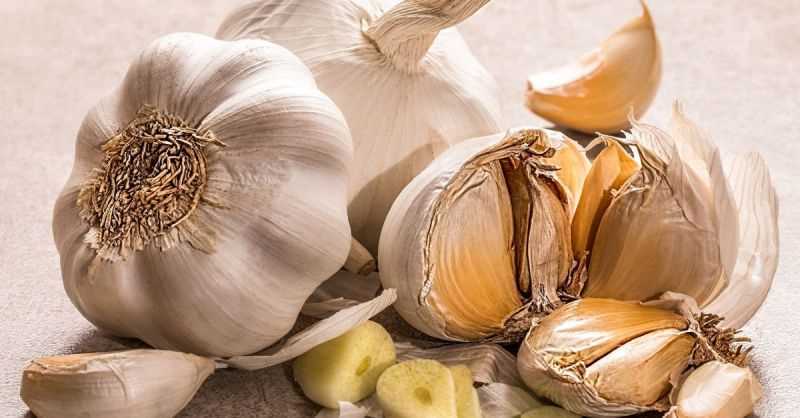
Plastic mulch can also be used to cover the soil around the garlic plants. This type of mulch helps retain moisture and heat in the soil, creating a warmer microclimate for the garlic plants. It is especially useful in colder regions where winter temperatures can be extremely low.
3. Row Covers
Row covers made of frost cloth or floating row covers can be placed over the garlic plants to provide additional protection from cold temperatures and harsh weather conditions. These covers allow sunlight, water, and air to reach the plants while protecting them from frost and wind.
4. Protective Structures
If you have a small-scale garlic garden, you can consider using protective structures such as cold frames or hoop houses. These structures provide a controlled environment for the garlic plants, shielding them from harsh weather conditions and creating a warmer growing space.
5. Pest Protection
In addition to protecting the garlic plants from the cold, it is important to also protect them from pests. You can use organic pest control methods such as companion planting, using garlic sprays or oil-based insecticides, and keeping the garden clean and weed-free to minimize pest infestations.
6. Regular Monitoring
Throughout the winter season, it is essential to regularly monitor the garlic plants for any signs of damage or diseases. By keeping a close eye on the plants, you can take immediate action to address any issues and ensure the health and well-being of your garlic crop.
By implementing these mulching and protection methods, you can improve the chances of successfully growing big winter garlic and harvest a bountiful crop.
Providing adequate water and nutrients for winter garlic
Proper watering and nutrient management are essential for the successful growth of winter garlic. Here are some tips and guidelines to ensure your garlic plants receive the necessary water and nutrients:
1. Watering
Garlic plants need consistent moisture throughout their growth period. However, it is crucial to avoid overwatering, as excessive moisture can lead to fungal diseases. Here’s how to water your winter garlic:
- Water deeply and infrequently: Give your garlic plants a good soak and then allow the soil to dry out slightly before watering again. This encourages the roots to grow deeper in search of moisture.
- Water in the morning: Watering in the morning allows foliage to dry out during the day, reducing the risk of disease.
- Avoid watering the leaves: Direct water to the base of the plants, avoiding wetting the foliage as much as possible.
2. Nutrient Management
Garlic plants require a good supply of nutrients to produce large, healthy bulbs. Here’s how you can provide adequate nutrition for your winter garlic:
- Prepare the soil: Before planting, incorporate well-rotted compost or organic matter into the soil to improve its fertility and texture.
- Apply balanced fertilizer: Before planting, apply a balanced fertilizer, such as a 10-10-10 or 14-14-14, following the package instructions.
- Side-dress during growth: About a month after planting, apply a nitrogen-rich fertilizer, such as blood meal or fish emulsion, around the base of the plants to support their growth.
- Avoid excessive nitrogen: While nitrogen is important for leaf growth, too much can delay bulb formation. Follow the recommended rates and timings for fertilizer application.
3. Mulching
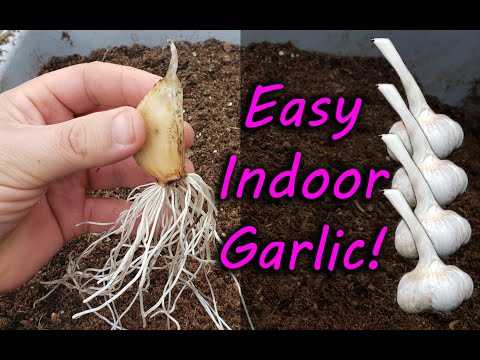
Mulching is a great way to retain moisture, suppress weeds, and provide slow-release nutrients to the garlic plants. Here’s how to use mulch effectively:
- Apply mulch after planting: Once your garlic plants have emerged a few inches, apply a layer of mulch around the plants, taking care not to cover the stems.
- Use organic mulch: Organic materials like straw, shredded leaves, or grass clippings make excellent mulch for garlic plants. Avoid using materials that may introduce diseases or pests.
- Maintain the mulch layer: Check the mulch periodically and replenish it as needed to maintain a thickness of about 2-4 inches.
By providing adequate water and nutrients, you can ensure the healthy growth of your winter garlic plants and harvest large, flavorful bulbs.
Controlling pests and diseases in winter garlic
Winter garlic is susceptible to various pests and diseases, which can significantly affect its growth and yield. However, with proper care and attention, you can minimize the damage caused by these pests and diseases. Here are some effective measures to control them:
Pests:
- Aphids: Aphids are common pests that can weaken and damage garlic plants by sucking sap from the leaves and shoots. Regularly inspect your garlic plants and if you notice aphids, you can spray them with insecticidal soap or neem oil.
- Onion maggots: Onion maggots are small, yellowish-white maggots that feed on the roots of garlic plants. To prevent infestation, you can apply a layer of straw mulch around the plants and use row covers to exclude the flies that lay eggs.
- Thrips: Thrips are tiny, slender insects that feed on the leaves of garlic plants, causing discoloration and deformation. You can control thrips by applying insecticidal soap or neem oil.
Diseases:
- Fungal diseases: Garlic is susceptible to various fungal diseases, such as white rot, downy mildew, and garlic rust. To prevent fungal diseases, make sure to plant garlic in well-draining soil and avoid overwatering. Applying fungicides can also help control the spread of fungal diseases.
- Viruses: Garlic is susceptible to viral diseases, such as garlic mosaic virus and garlic yellow stripe virus. Planting disease-free garlic cloves and practicing good sanitation in the garden can help prevent viral infections. Remove and destroy any infected plants to prevent the spread of viruses.
- Nematodes: Nematodes are microscopic worms that can cause stunted growth and yield loss in garlic plants. To control nematodes, you can use crop rotation and avoid planting garlic in the same area for consecutive years. Additionally, incorporating organic matter into the soil can help suppress nematode populations.
By implementing these pest and disease control measures, you can ensure the health and productivity of your winter garlic crop. Regular monitoring and early intervention are key to preventing severe infestations and infections.
Harvesting winter garlic at the right time
Harvesting winter garlic at the right time is crucial to ensure that you get the best flavor and storage life from your garlic bulbs. Here are some tips to help you determine the right time to harvest your winter garlic.
1. Look for yellowing leaves
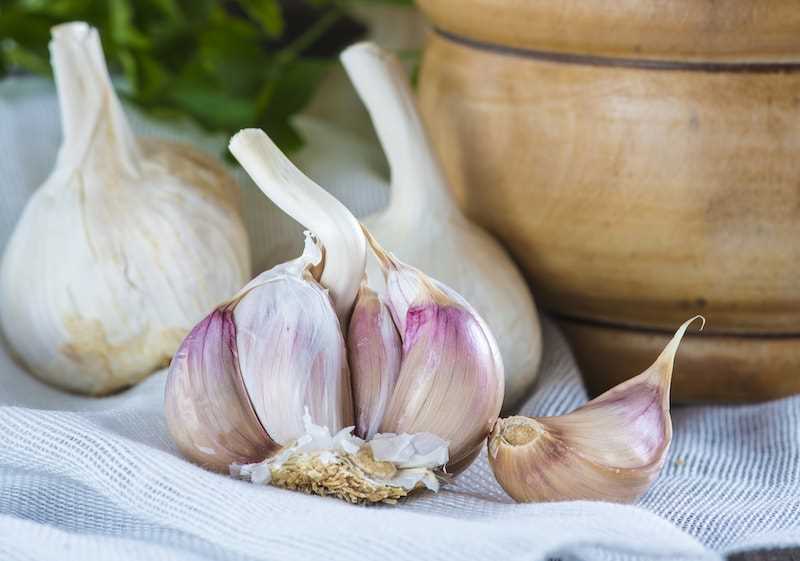
As garlic plants mature, their leaves will start to turn yellow, indicating that the garlic bulbs are nearing harvest time. Check the lower leaves of the plant, as they usually start to yellow first. Once about half of the leaves have turned yellow, it’s a good time to start considering harvesting your garlic.
2. Check for papery skins
Another indicator that your winter garlic is ready to be harvested is the papery skin that covers the garlic bulbs. As the bulbs mature, these skins will become more papery and dry, making it easier to peel them off. If the skins are still tight and difficult to remove, it’s a sign that the garlic bulbs are not yet ready for harvest.
3. Perform the thumb test
The thumb test is a simple way to determine if your winter garlic is ready to be harvested. Gently press your thumb into the skin of the garlic bulb. If the skin feels thin and the bulb gives a little under the pressure, it’s a good indication that the garlic is ready to be harvested. However, if the skin feels thick and the bulb feels firm, it’s best to wait a little longer before harvesting.
4. Consider the weather
The weather conditions during the growing season can also influence the timing of your garlic harvest. If you’ve had a particularly wet season, it’s best to harvest your winter garlic a bit earlier to prevent the bulbs from rotting in the ground. On the other hand, if you’ve had a dry season, you can afford to wait a little longer before harvesting.
5. Time it right
Finally, it’s important to note that winter garlic is typically harvested in late spring or early summer, depending on your location and the specific variety you are growing. Keep track of the planting date and the estimated harvest time for your particular variety, as this can vary.
By following these tips and paying attention to the indicators mentioned, you will be able to harvest your winter garlic at the right time, ensuring the best flavor and storage life for your garlic bulbs.
Storing and using winter garlic
After harvesting your winter garlic, it’s important to store it properly to preserve its freshness and flavor. Here are some tips on how to store and use winter garlic:
Storing winter garlic
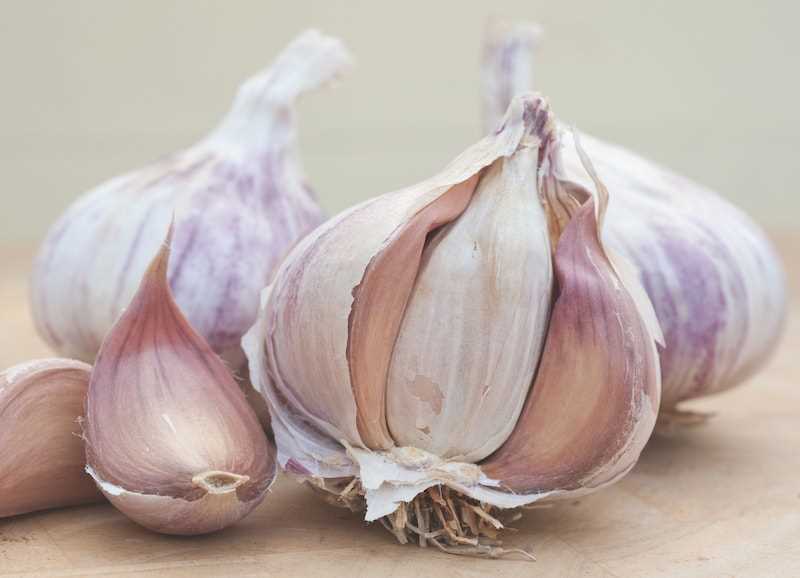
To store winter garlic, you should follow these steps:
- Clean the garlic bulbs by removing any dirt or loose skins.
- Allow the garlic to dry in a well-ventilated area for a few weeks. This will help to cure the garlic and remove excess moisture.
- Once the garlic bulbs are completely dry, you can cut off the tops and roots.
- Store the garlic bulbs in a cool, dry place with good air circulation. A pantry or basement works well for this purpose.
- Avoid storing garlic near other vegetables or fruits, as the ethylene gas produced by these foods can cause the garlic to spoil more quickly.
Using winter garlic
Winter garlic can be used in a variety of dishes to add flavor and richness. Here are some ideas on how to use winter garlic:
- Roast whole garlic bulbs for a delicious, sweet and savory flavor. Simply slice off the top of the bulb, drizzle with olive oil, and bake in the oven until soft and golden.
- Crush garlic cloves and mix with butter to create a flavorful garlic butter. This can be spread on bread, melted over vegetables, or used as a base for sauces and dressings.
- Add minced garlic to soups, stews, and sauces for extra depth of flavor. Start with a small amount and adjust to taste.
- Use garlic in marinades for meats, poultry, and seafood. The natural enzymes in garlic help to tenderize and flavor the protein.
- Make a homemade garlic aioli by combining minced garlic, mayonnaise, lemon juice, and salt. This can be used as a dip for fries, a spread for sandwiches, or a topping for grilled meats.
By storing winter garlic properly and using it in your favorite recipes, you can enjoy the delicious flavor and health benefits of this versatile vegetable all year round!
“Question-Answer”
What are the secrets to raising big winter garlic?
The secrets to raising big winter garlic include selecting the right variety, planting at the right time, providing proper soil preparation and nutrition, and implementing proper care and maintenance practices.
Which variety of garlic is best for winter planting?
There are several varieties of garlic that are well-suited for winter planting, including Chesnok Red, Music, Spanish Roja, and Georgian Crystal. It is important to choose a variety that is known for its cold tolerance and adaptability to your specific climate.
When is the best time to plant winter garlic?
The best time to plant winter garlic is in the autumn, typically around September or October, before the ground becomes frozen. This allows the garlic to establish its roots before the winter months, resulting in stronger and larger bulbs.
What soil preparation is necessary for growing big winter garlic?
Proper soil preparation is essential for growing big winter garlic. The soil should be well-drained and rich in organic matter. It is recommended to amend the soil with compost or well-rotted manure prior to planting to provide the necessary nutrients for the garlic plants.
How often should winter garlic be watered?
Winter garlic should be watered regularly, especially during dry periods. It is important to keep the soil evenly moist, but not waterlogged. Overly wet conditions can lead to rotting of the bulbs. Depending on weather conditions, watering may be needed once or twice a week.
Are there any pests or diseases that can affect winter garlic?
Yes, there are several pests and diseases that can affect winter garlic. Common pests include onion thrips, aphids, and nematodes. Diseases such as white rot, purple blotch, and garlic rust can also be problematic. Implementing proper pest and disease management strategies, such as crop rotation and regular inspections, can help prevent and control these issues.







